In a world where so many e-bike brands play it safe, cribbing ideas from each other like it’s an unspoken rule, Vvolt decided to go their own way with the Centauri II. At a glance, it’s a modern twist on some old-school concepts—think Cannondale’s Headshok days—with a monoshock suspension fork offering 30mm of travel nestled between the head tube and fork. They’ve also gone for a Gates CDX carbon belt drive—a single-speed setup that keeps things simple, clean, and virtually maintenance-free. But it’s not all retro reboots; Vvolt has packed in a mid-drive motor with 350W of power and a hefty 120Nm of torque, paired with an automatic 3-speed hub for no-nonsense shifting.
It’s the kind of setup that raises eyebrows—both for its ambition and because it’s not the cookie-cutter spec sheet we’ve come to expect in this price range. From my week of testing, it’s clear Vvolt isn’t trying to compete with the copy-paste commuter e-bikes flooding the market. They’re carving out their own lane. But does that lane lead somewhere great, or does it dead-end in compromises? Let’s dive into the details and see if this bike delivers or veers off course.
My Experience Riding The Vvolt Centauri II E-Bike
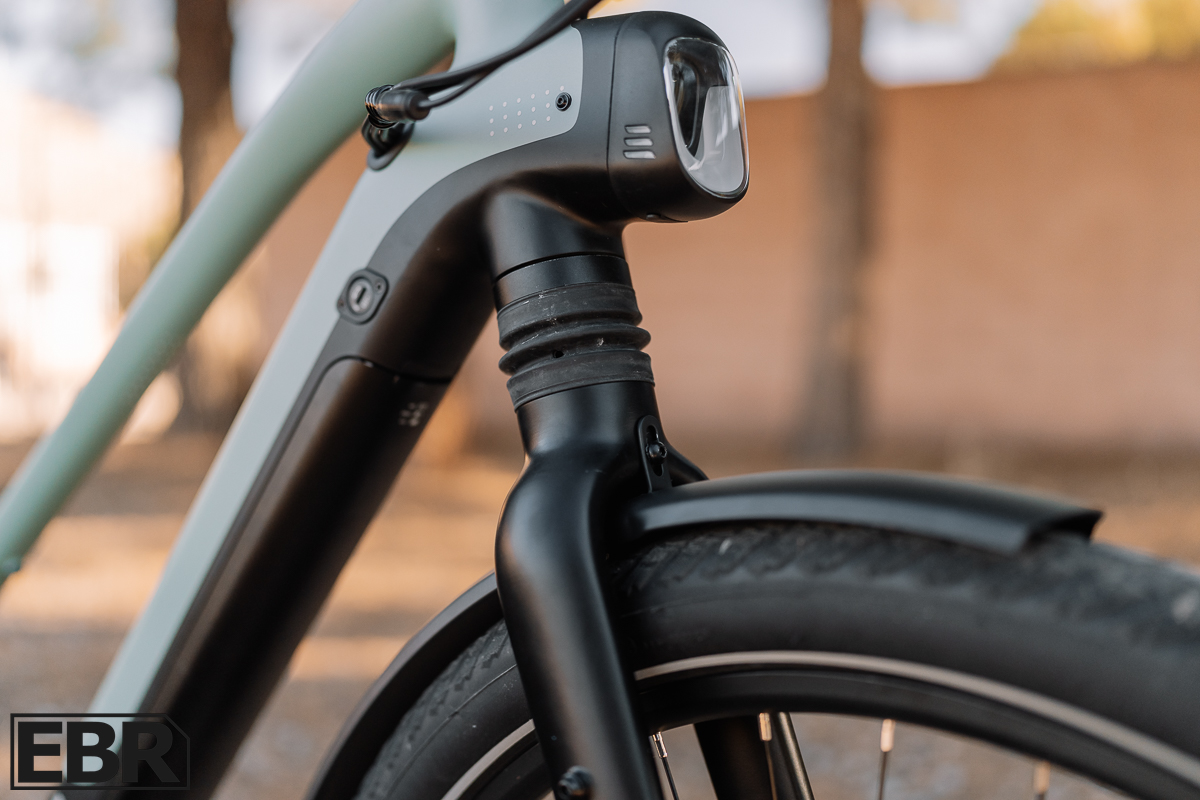
Right out of the gate, the Centauri II rides smooth and quiet—mostly. The Gates carbon belt drive and mid-drive motor keep things whisper-quiet, but those alloy fenders can’t help but rattle a bit when the road gets rough. It’s not a dealbreaker, but you’ll notice it on bumpier commutes.
The 3-speed automatic hub is a standout feature. I’ll be honest—I don’t know the exact engineering wizardry behind it, but I didn’t have to. It just works. Shifts felt natural and well-timed, and at no point did I think, “I wish this shifted differently.” That’s a win in my book.
The geometry leans into that hybrid upright cruiser vibe, typical of city e-bikes. For reference, I’m 5’11” and the L/XL size fit me comfortably, so sizing seems spot-on. The riding position is relaxed but still efficient for tackling longer rides or moderate hills.
Now, the monoshock. I really wanted to love this feature. It’s unique and brings back some nostalgic Headshok vibes, but it didn’t quite hit the mark for me. While it compressed on bumps as expected, it felt stiff and lacked the plushness you’d hope for in suspension. On bigger hits, there’s a bit of a “slap” sensation that’s hard to ignore. Cool concept, but the execution could use some fine-tuning.
On the flip side, the mid-drive motor is smooth, powerful, and does what it’s supposed to—no complaints there. With 120Nm of torque and the Gates CDX belt paired to the 46T front ring and 22T rear cog, the single-speed drivetrain handles most terrain without issue. Steeper hills? That’s where the boost button shines. It’s not a throttle, which I actually appreciated as a cyclist, but it delivers just enough assist to clear climbs without feeling gimmicky. That said, folks who rely on throttles for cruising may miss having one here.
The CST tires roll smooth and quiet, and the Shimano brakes are sharp and reliable—no surprises there. All in all, the Centauri II rides as good as it looks. Sure, the monoshock left me wanting more, and the fenders could use some tweaking, but those are nitpicks in what’s otherwise a well-thought-out, enjoyable bike.
Range
Estimated Range (from Vvolt): Up to 650 miles
Real World Range Test Results:
- MIN PAS: 24 mi
- MAX PAS: 49 mi
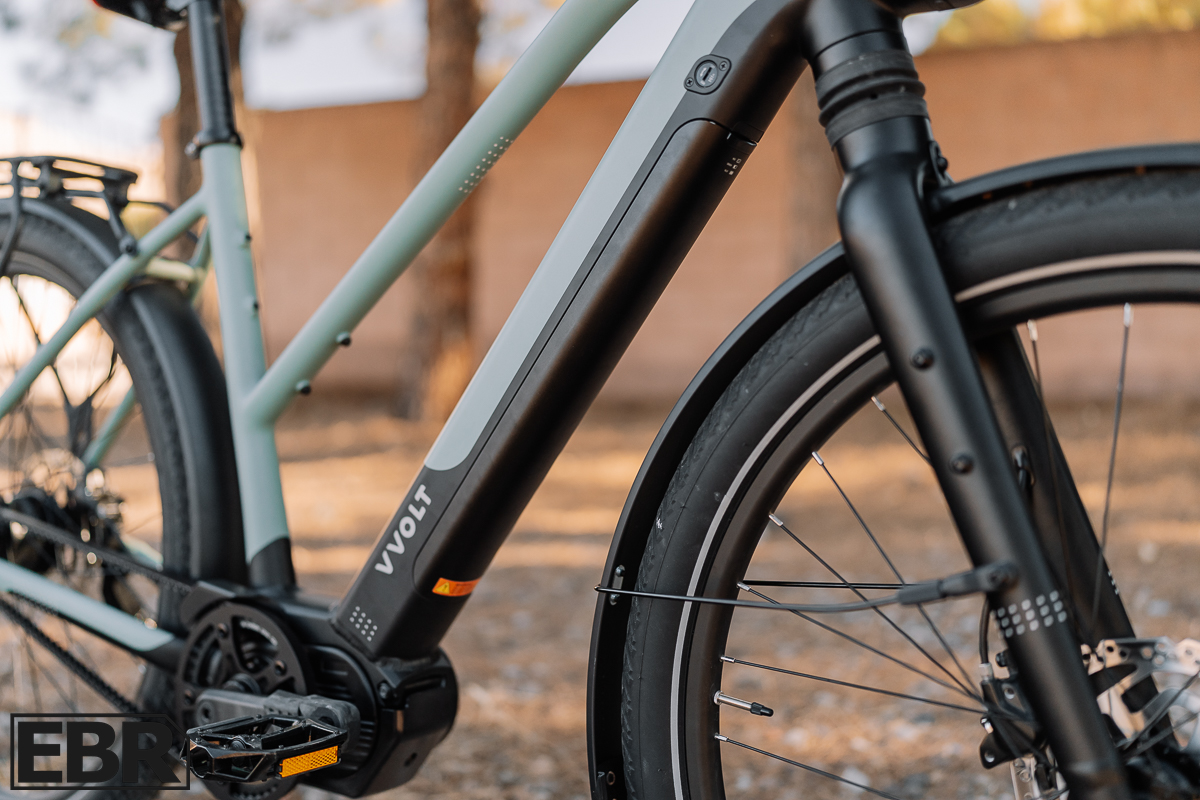
Vvolt claims the Centauri II can deliver between 20 to 60 miles of range, depending on the assist level and riding conditions. After putting it through a real-world test, I found the bike slots neatly within that estimate. On minimum pedal assist (PAS), I managed 49 miles—right at the upper end of their range claim. When I cranked it up to maximum PAS, the range dropped to 24 miles, which aligns well with what they’re advertising.
Now, what does that mean in practical terms? If you’re the type of rider who likes to spin along at a mellow pace and doesn’t rely heavily on assist, this bike will comfortably take you through long commutes or extended weekend rides without much battery anxiety. But if you’re the “full send” type, blasting up hills and maxing out the motor, you’ll want to keep your rides closer to the 20–25-mile mark before planning for a recharge.
For most riders, the range feels practical. The 490Wh battery paired with the efficient mid-drive motor does its job, and unless you’re tackling constant steep climbs or riding exclusively at top speed, you’ll rarely feel like it’s limiting you. And since the battery is removable, you could always grab a spare for extended trips.
Power (Motor & Battery)
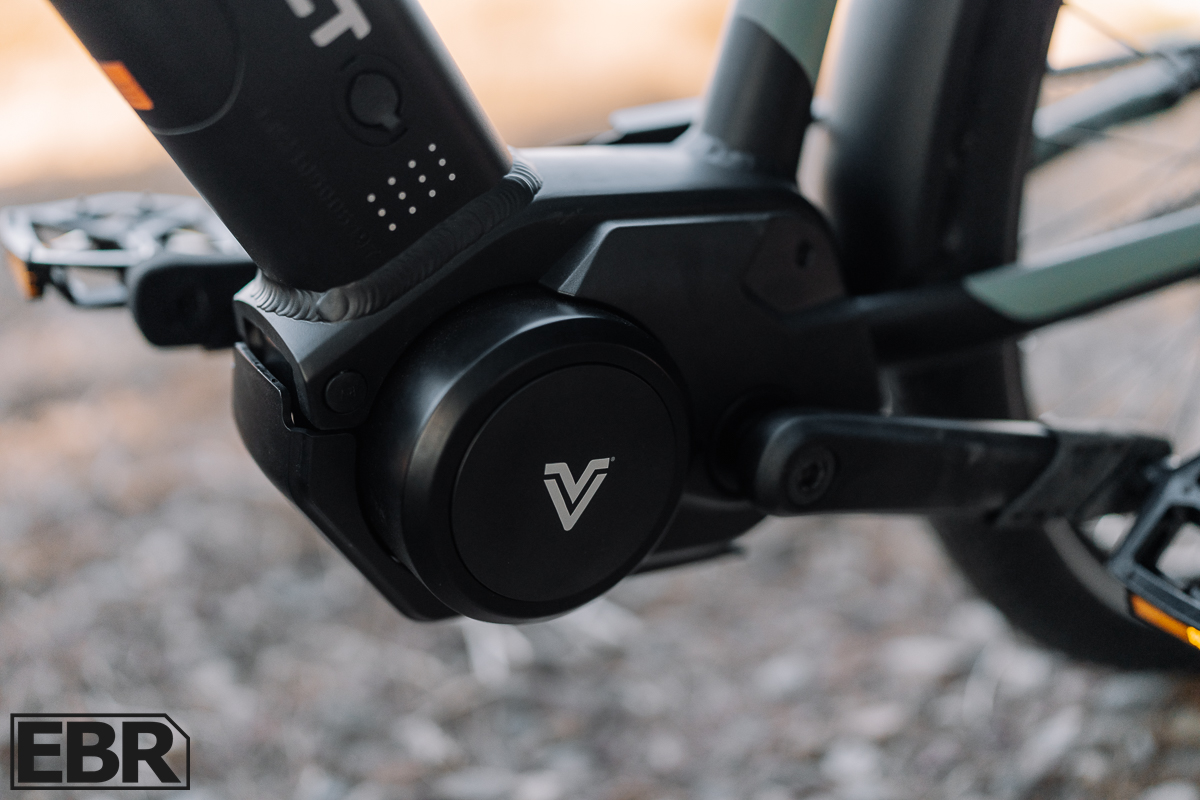
The Centauri II’s power setup is built around a 350W mid-drive motor from Ananda, delivering an impressive 120Nm of torque with the ability to peak at 650W—numbers that immediately set it apart in this category. Mid-drives are already known for their efficiency, and this one is no different, offering smooth, natural power delivery that meshes well with the bike’s Gates CDX belt drive and 3-speed automatic hub. Whether I was cruising flat roads or tackling steeper climbs, the motor never felt outmatched.
For a bike like this, the power profile makes sense. It’s not a brute-force powerhouse aimed at shredding trails or hauling massive cargo, but for urban commutes, recreational rides, and even moderate hill climbs, it handles itself just fine. The torque is particularly handy when paired with the single-speed drivetrain—it ensures you’ve got enough grunt to clear those tougher sections without feeling like the gearing is holding you back.
The 490Wh battery is equally practical. It’s integrated neatly into the frame, keeping the bike’s profile clean, and it’s removable for easy charging. Combined with the motor, it offers a range that’s respectable, though not groundbreaking. For most riders—especially commuters or weekend explorers—it’s enough to cover typical rides without stressing over battery life.
One thing to note is the absence of a throttle. While some folks might miss it, I think the boost button (a quick power surge for about 4 seconds) is a nice compromise. It gives you that extra assist when you need it, like cresting a steep hill, without sacrificing the pedal-centric feel that appeals to cyclists.
Bottomline, the Centauri II’s power system feels well-suited for what this bike is: a reliable, efficient, and clean commuter that can handle a variety of riding conditions without breaking a sweat. It’s not overbuilt or overhyped—it’s just well-executed for its intended purpose.
Components
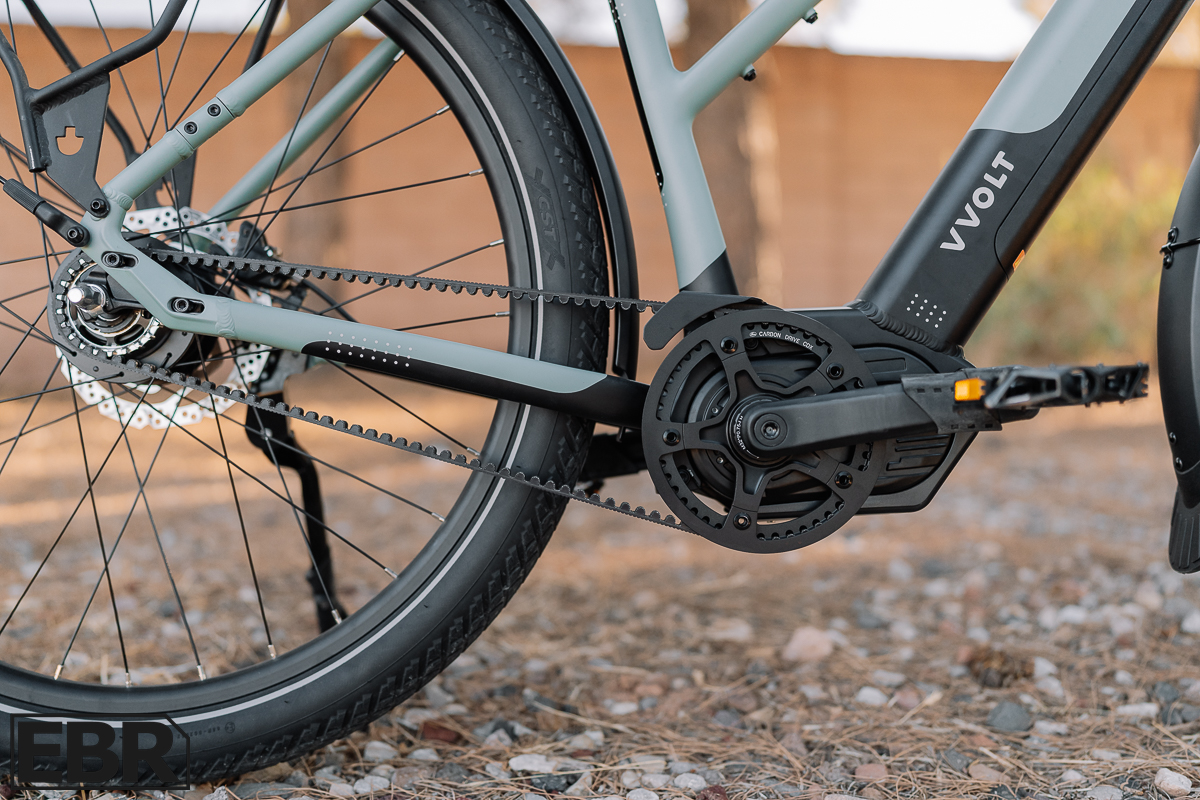
The Centauri II’s components show Vvolt isn’t afraid to try something different. Instead of sticking to the usual playbook, they’ve assembled a mix of practical, commuter-friendly parts with just enough innovative touches to set this bike apart. It’s a thoughtful build that leans into reliability while offering a modern spin on what a commuter e-bike can be
Let’s start with the frame—a mid-step alloy design that makes it easy to hop on and off, whether you’re in jeans or hauling groceries. With a 440-pound load capacity, it’s clear this bike isn’t afraid to work for a living. Toss on some racks, load it up, and it’s ready to roll.
The monoshock suspension is a cool feature, though it’s more about taking the edge off than tackling big hits. With 30mm of travel, it smooths out city streets and the occasional gravel path, but don’t expect it to feel like a full suspension setup—it’s functional, not flashy.
Moving to the wheels and tires, you get sturdy 27.5-inch double-wall aluminum rims paired with CST 2.25-inch tires. These tires roll quiet and smooth, with reflective sidewalls for visibility and a puncture-resistant belt to keep flats at bay. Solid choice for urban and light gravel riding.
The drivetrain is minimal and maintenance-free, featuring a 46T front chainring and a 22T rear cog paired with the Gates CDX belt drive (already covered earlier). It’s a no-fuss setup that’s perfect for commuters who don’t want to think about chains and derailleurs.
Other highlights? The Shimano MT200 hydraulic brakes with 180mm rotors deliver plenty of stopping power. The handlebar setup (720mm wide with a 15mm rise and 12° sweep) gives a relaxed yet controlled feel, and the IsoStac hybrid gel saddle is comfortable, but it did start to wear on me in my longer range testing. The ergonomic lock-on grips finish off the cockpit with a functional yet comfortable feel.
Nothing about these components feels overkill, and that’s the point. They’re well-chosen for the kind of riding this bike is meant to do—commuting, errands, and casual exploring. It’s functional, durable, and easy to live with, which is exactly what you want in a bike like this.
Screen / User Interface / App
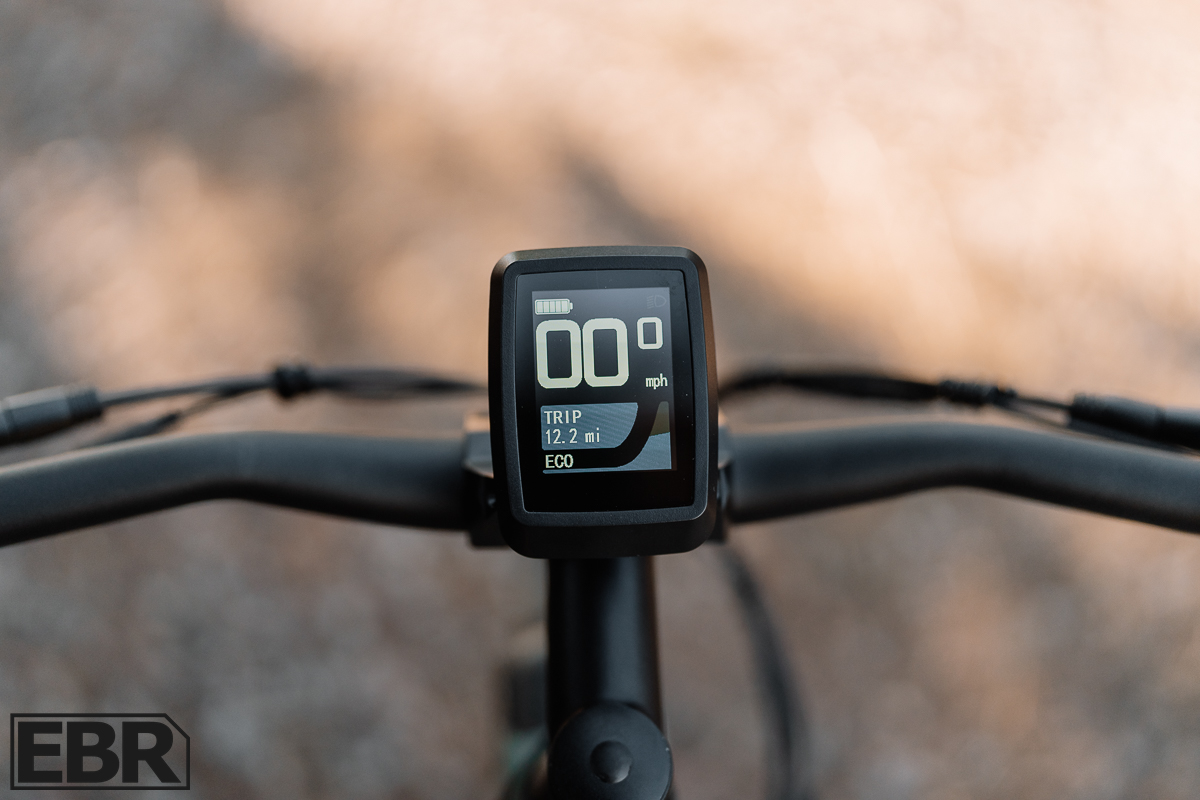
The Centauri II’s Ananda D16 display is simple and effective, perfectly aligned with the bike’s commuter-friendly focus. The 2.4-inch color screen is easy to read in any light thanks to its auto-brightness feature, and it’s tough enough to handle the elements with its IP66 weather resistance. Key info like speed, assist level, battery life, and trip stats is front and center, and the handlebar remote keeps navigation within easy reach.
For riders who like a little customization, the display offers a few practical options. You can reset trip data, adjust the backlight brightness, change the speed unit between mph and km/h, and even tweak how long the system stays idle before shutting down. It’s not overly complicated, but it gives you enough control to personalize your experience.
There’s no app integration here, but that’s not a miss—it keeps things simple and distraction-free, which suits the Centauri II’s purpose.
Vvolt Centauri II Model Options
The Centauri II is available in three sizes (S/M, M/L, and L/XL), covering riders from 4’9” to 6’4”. With its step-through design and relaxed geometry, the fit feels dialed for commuting and casual rides. At 5’11”, the L/XL worked perfectly for me, offering plenty of clearance and a balanced riding position.
You get two color choices: Forest Planet (a deep green) and Galactic Storm (a silver-blue), both with reflective graphics for added visibility. The frame is thoughtfully designed with adjustable belt tensioners for maintaining the Gates carbon drive system and four attachment points for mounting gear: on the seat tube, top tube, and forks. Rear rack mounts are included too, making it easy to load up for errands or commuting.
Vvolt includes a second battery for free, with optional add-ons like a bike lock and rear rack to expand the bike’s versatility. A three-year warranty backs the build, giving riders extra confidence. It’s a practical setup that’s well-suited for daily riders who value comfort, reliability, and a touch of utility.
Is The Vvolt Centauri II Worth Buying?
The Centauri II proves that taking chances in e-bike design can pay off. Vvolt didn’t stick to the script—they created a bike that stands out with its smooth ride, quiet operation, and low-maintenance Gates belt drivetrain. It’s clear this bike was designed with commuters and everyday riders in mind, offering a practical and reliable experience.
Pros
- The Gates carbon belt drive and mid-drive motor keep the ride smooth and quiet.
- The step-through frame design, and multiple mounting points make it practical for rigging it out to suit whatever your adventure is.
- The low-maintenance drivetrain with a belt drive, adjustable belt tensioners, and a 3-speed auto-shifting hub eliminates the usual hassle of chains and derailleurs and associated grease stains on your pant leg.
- The 120Nm mid-drive motor feels solid with plenty of power for most rides, even moderate hills without feeling underpowered.
Cons
- The Frame integrated headlight looks great, but it lacks the ability to turn with the bike like when mounted on a handlebar.
- The boost button is useful for short bursts of power, but the 4-second limit might leave some wishing there was a more traditional throttle.
Of course, it’s not without its quirks. The monoshock works but could be a bit softer, and the boost button, while useful for short bursts of power, might leave some wishing for a throttle. These aren’t dealbreakers but are worth considering based on your needs and how you ride.
At its core, the Centauri II is for anyone who values a dependable, smooth, and quiet e-bike that doesn’t overcomplicate things. Whether you’re commuting, running errands, or just enjoying a weekend ride, this bike feels right at home. For riders who want function, comfort, and just a touch of innovation, it’s a solid choice.

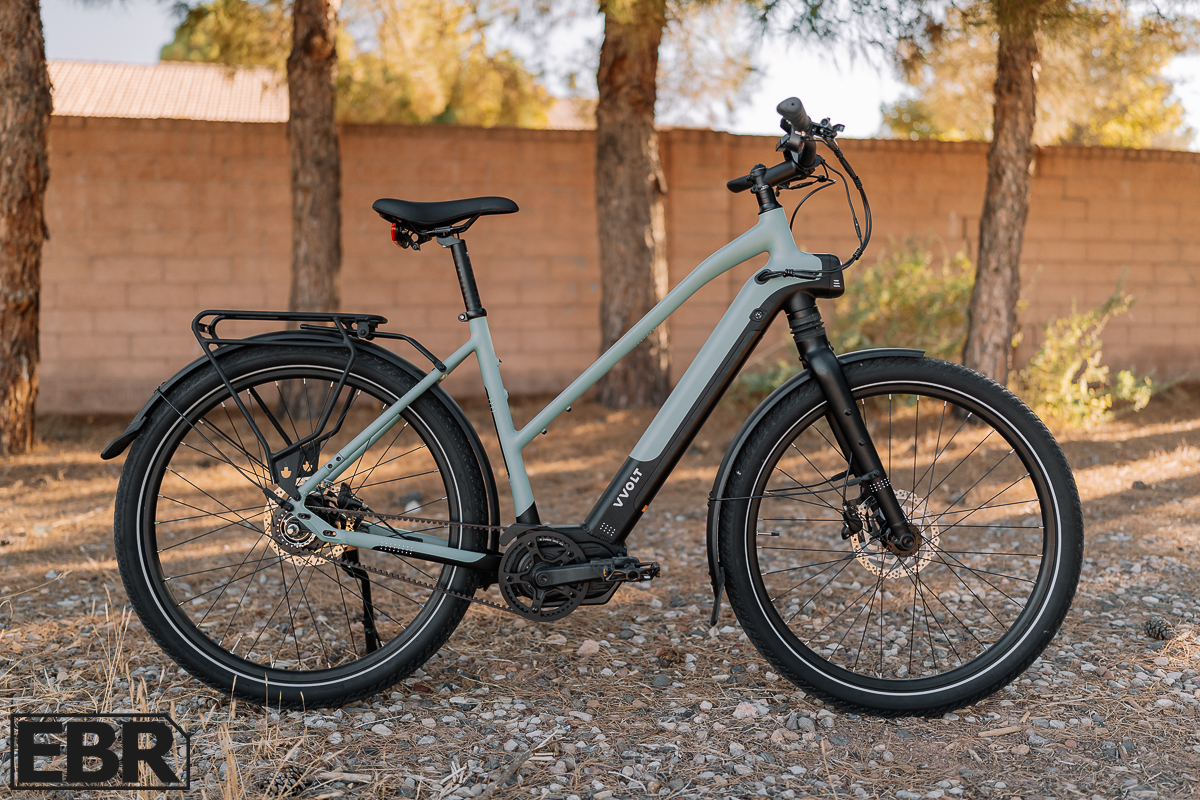
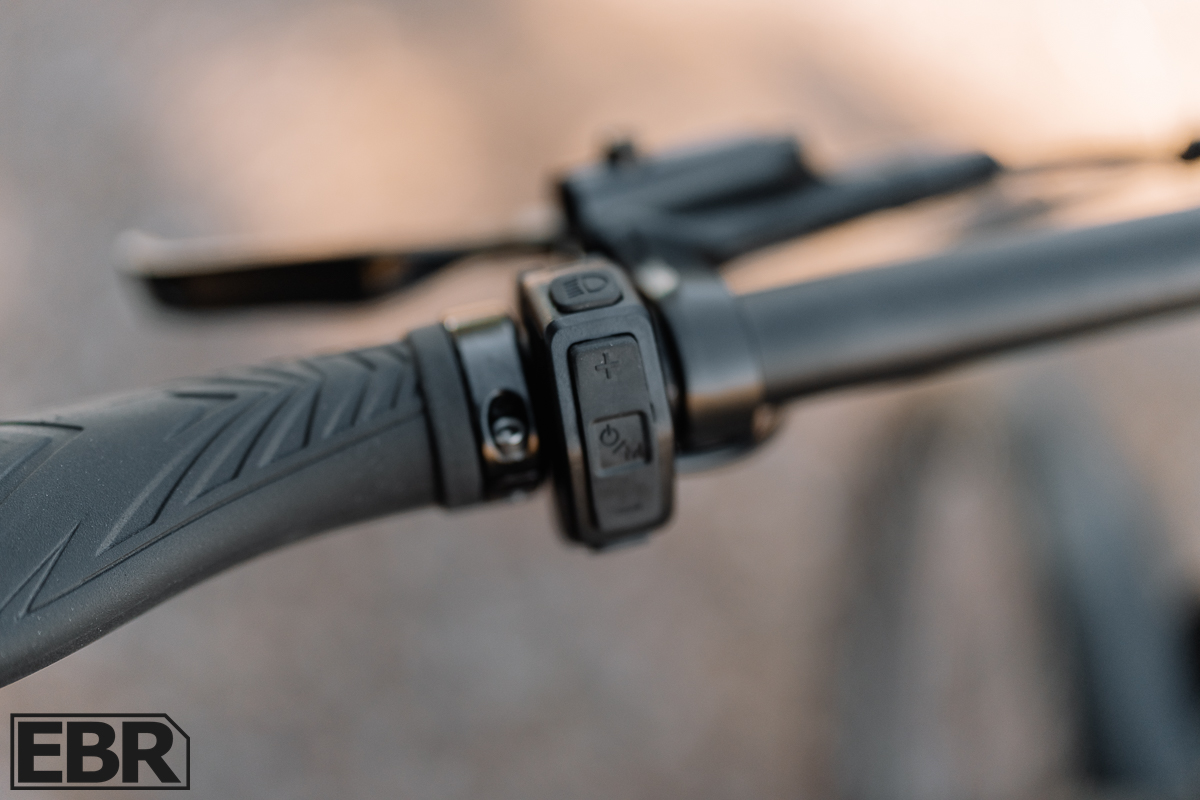
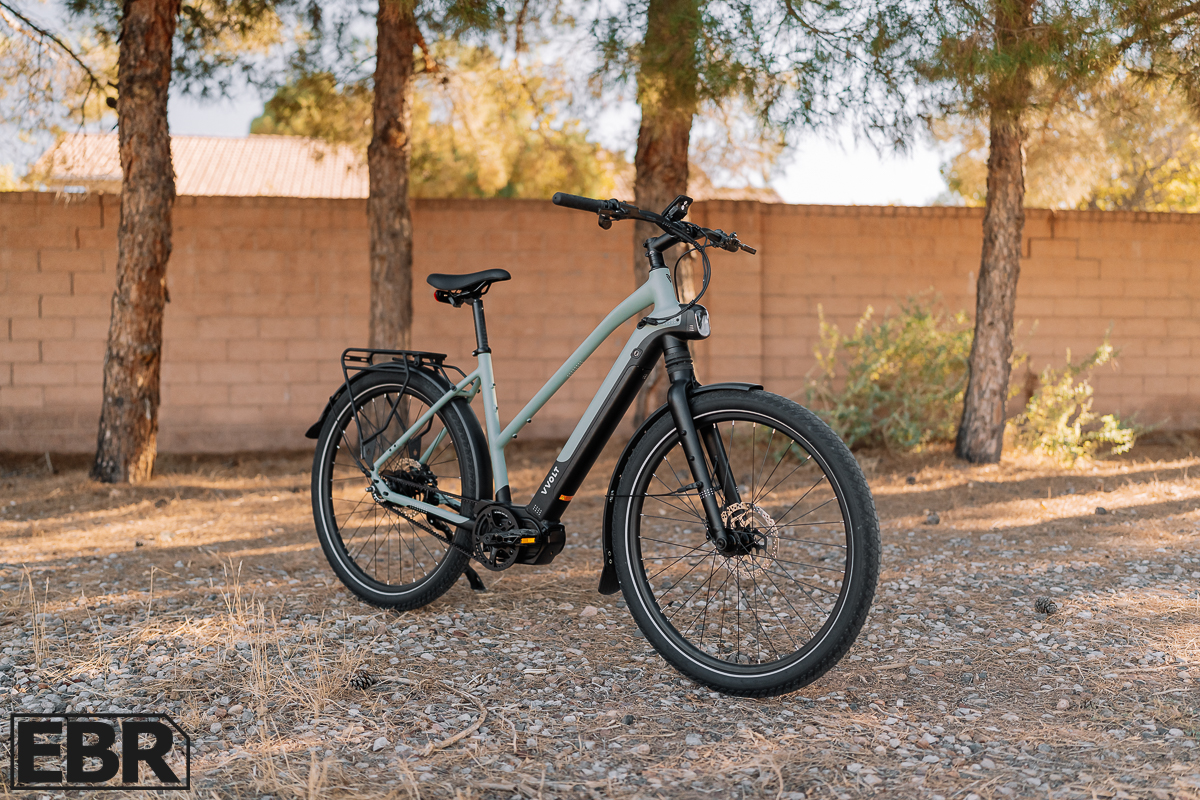
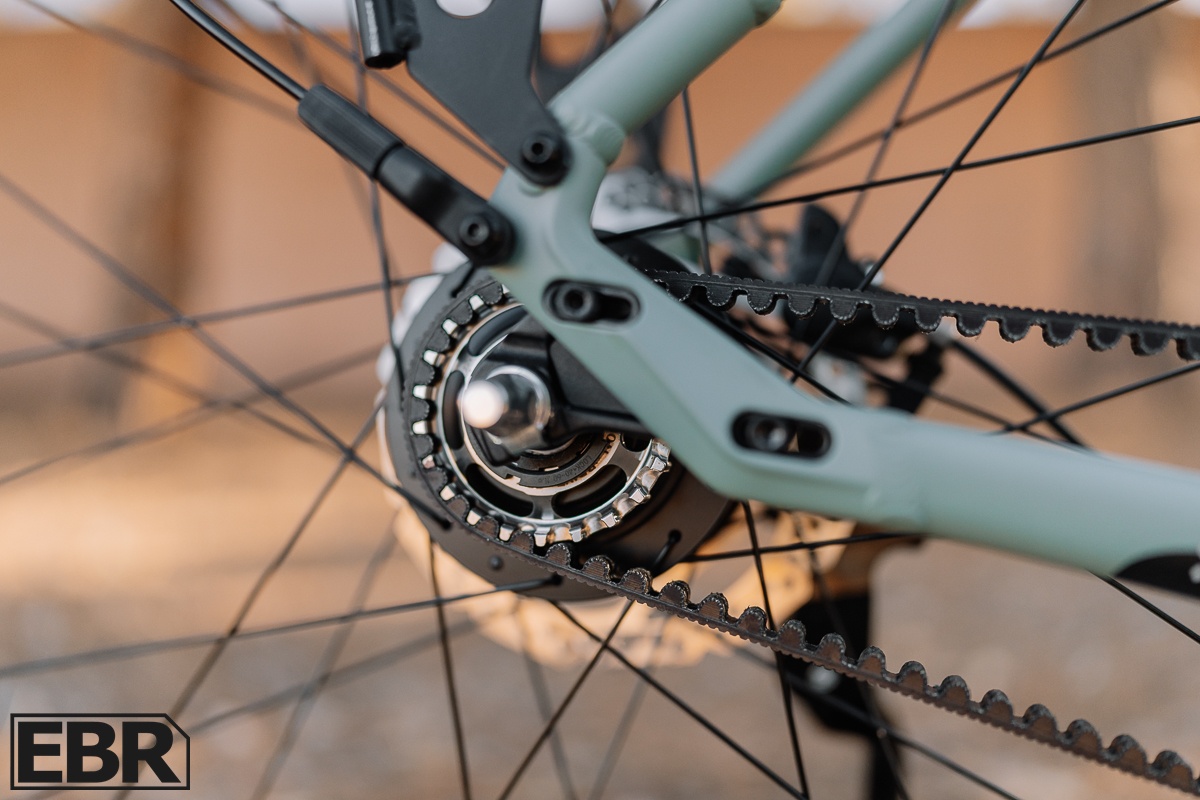
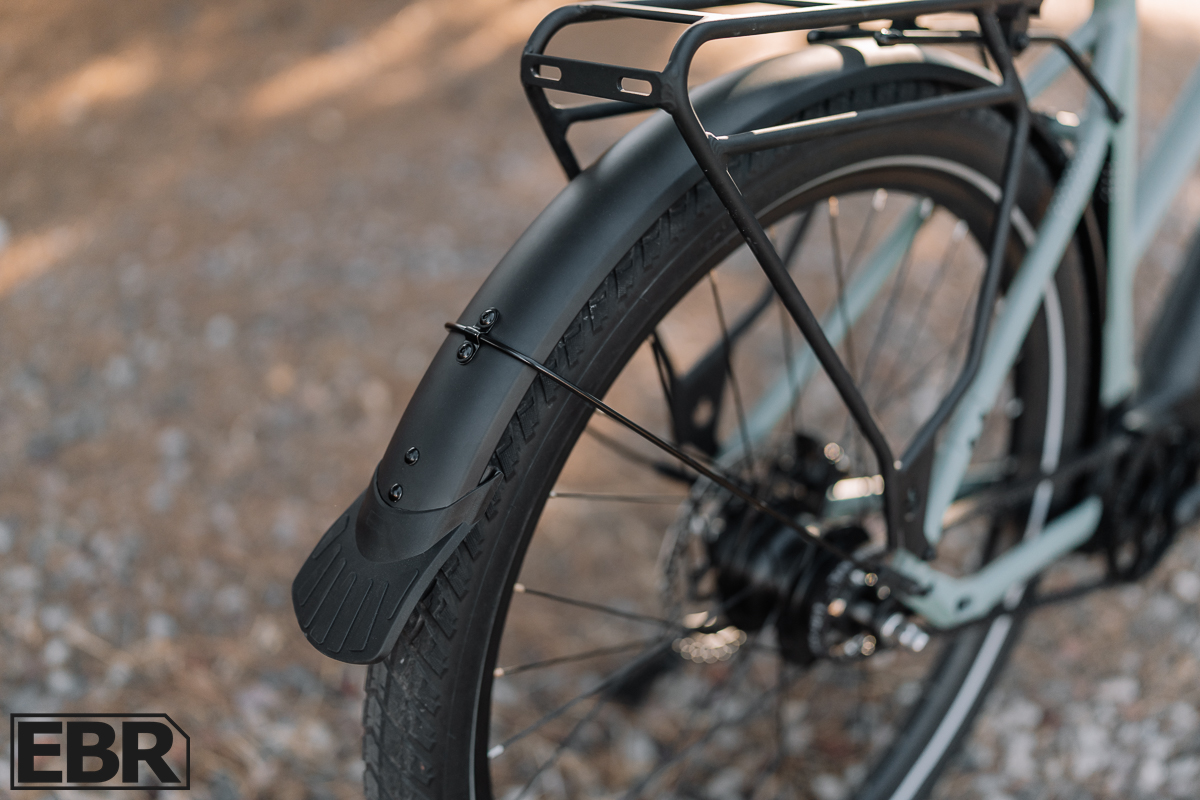
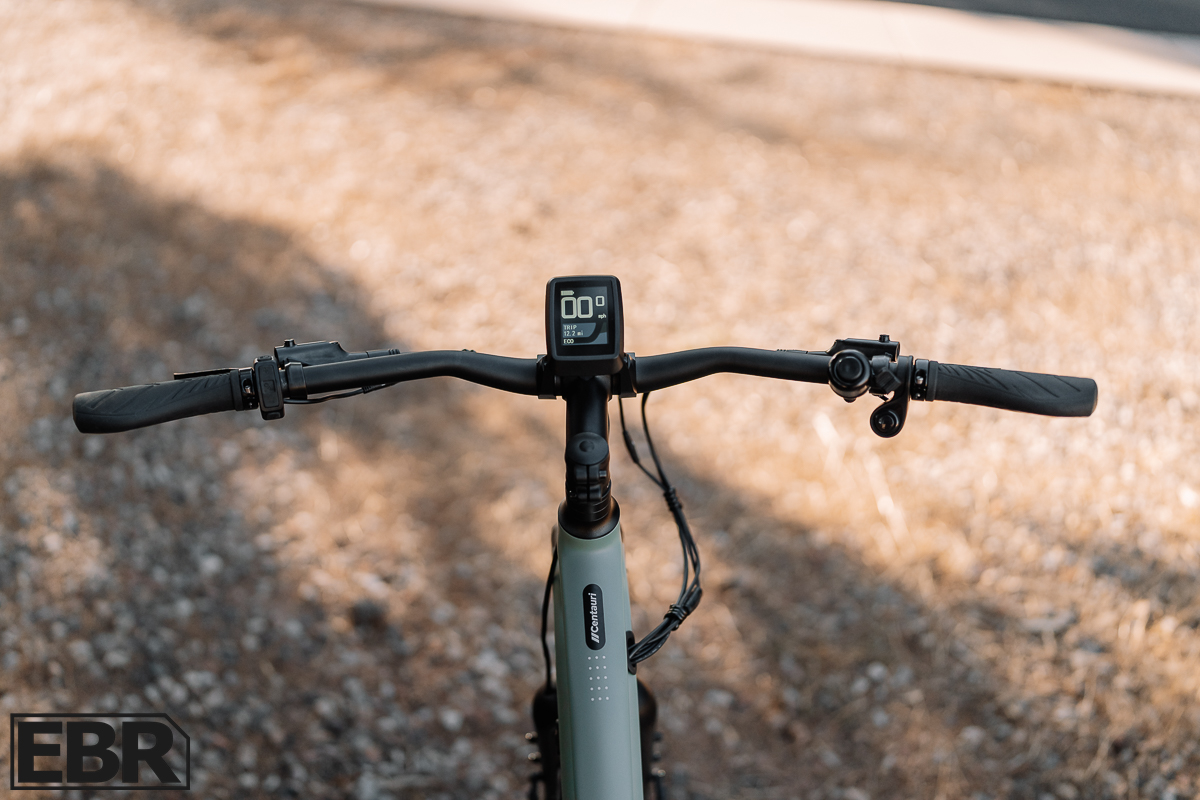
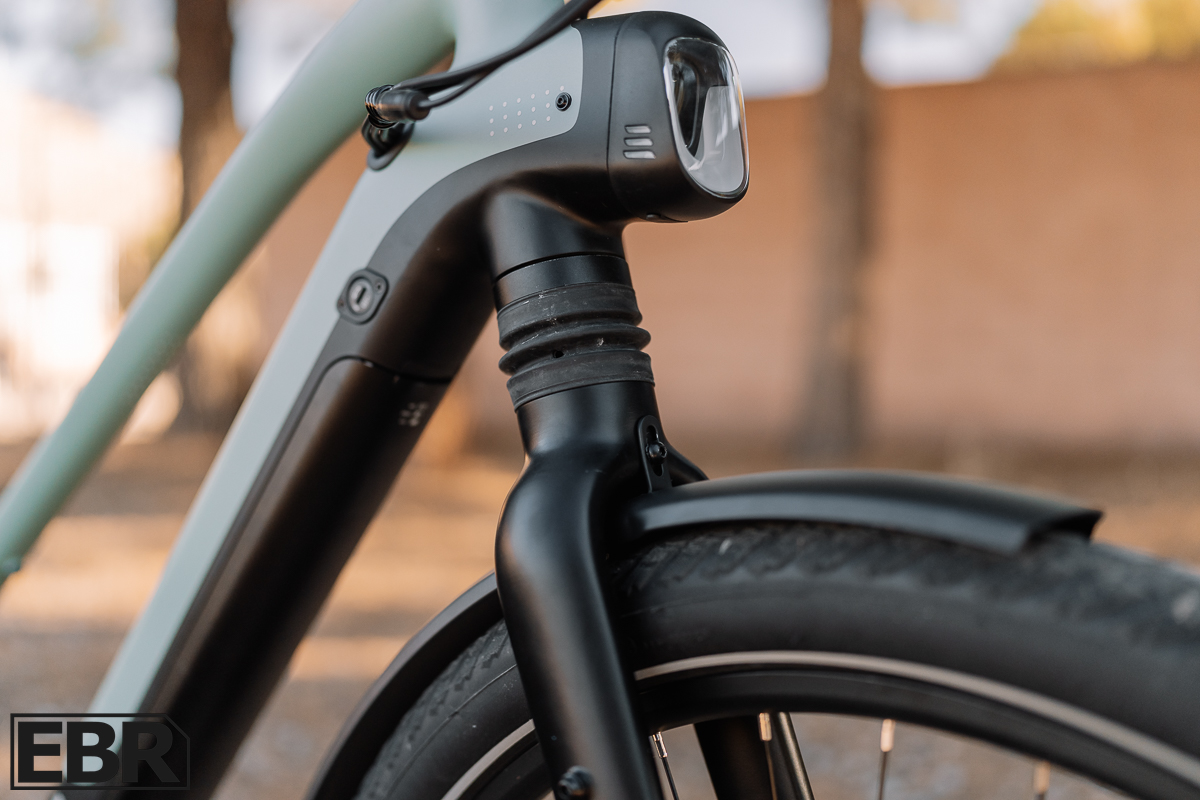
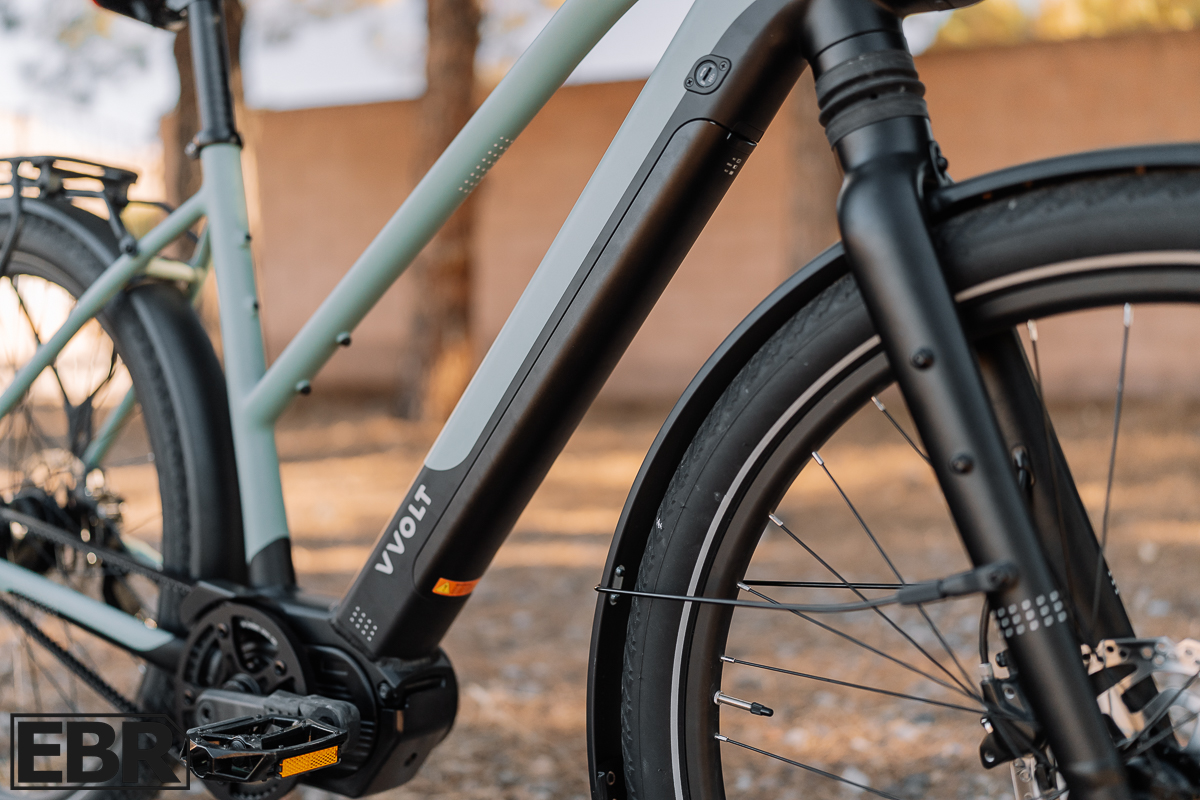
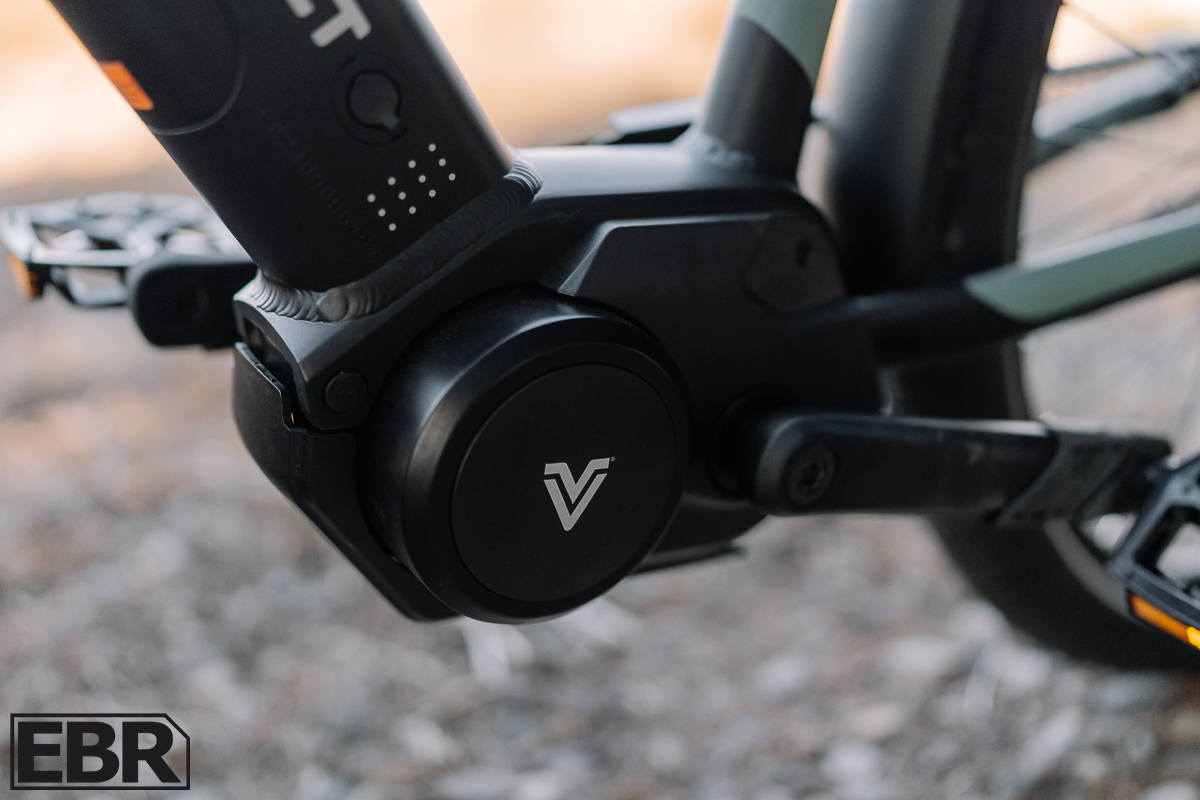
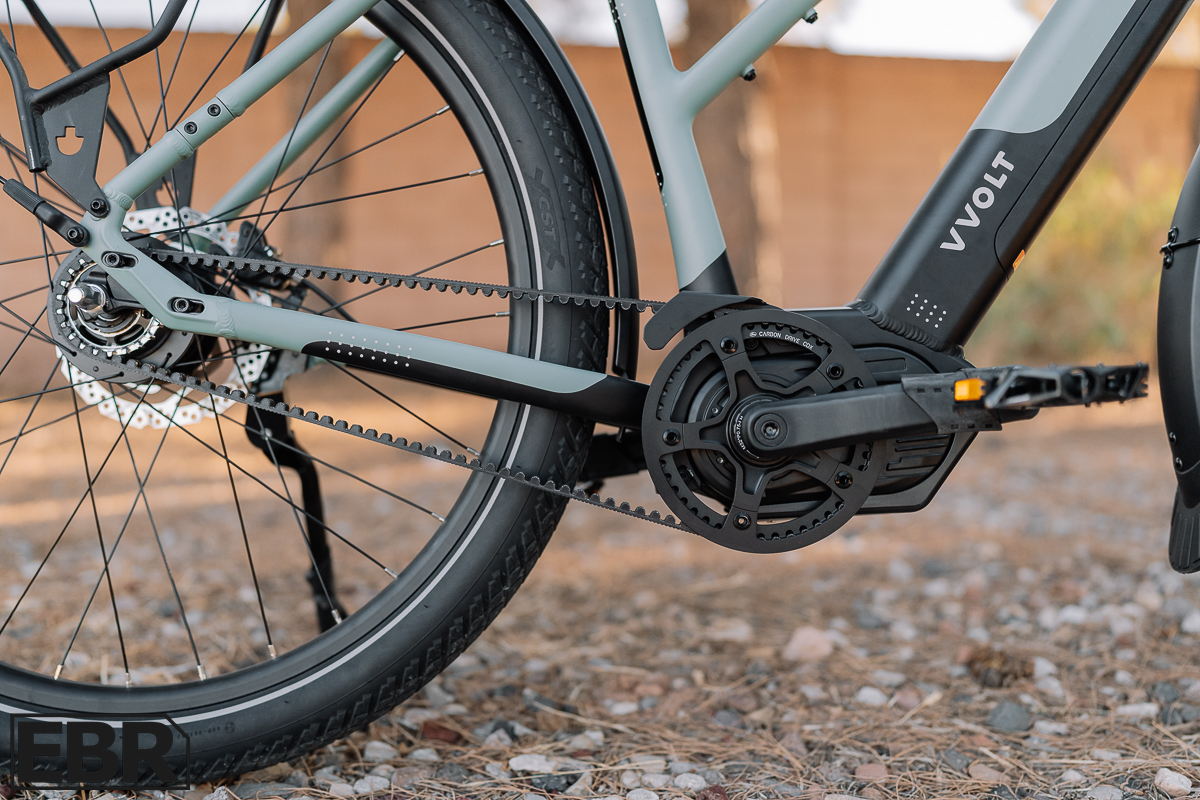
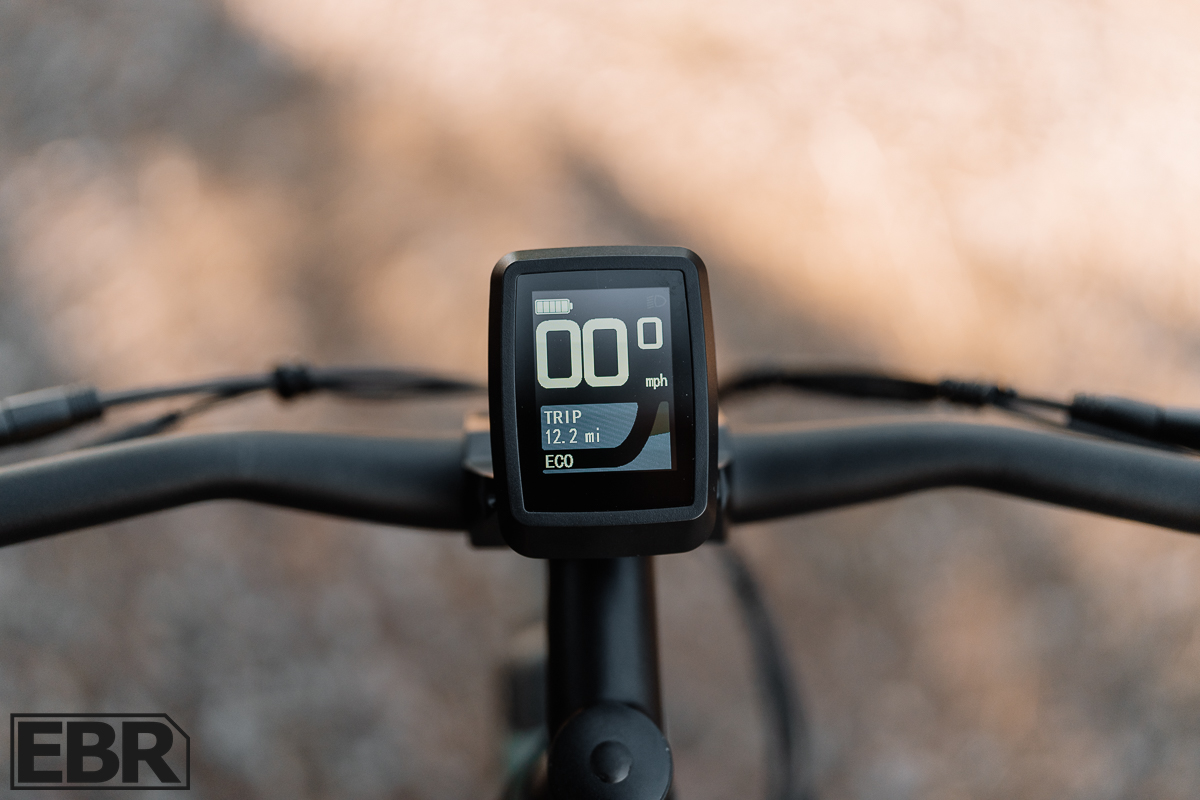

Reader Interactions